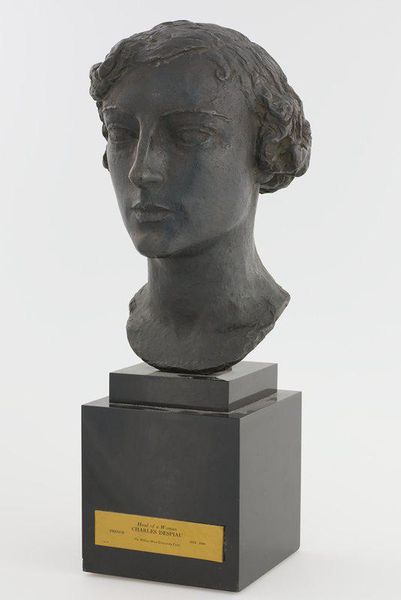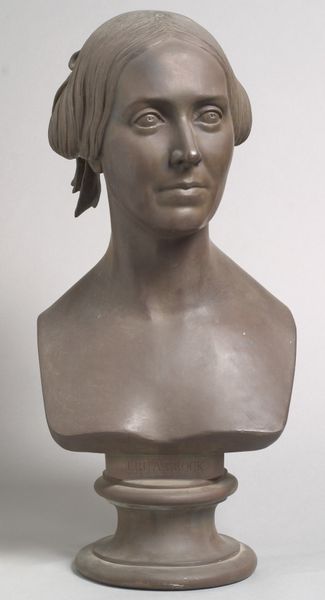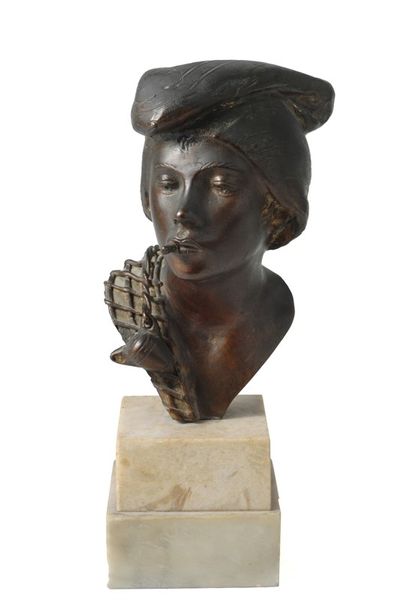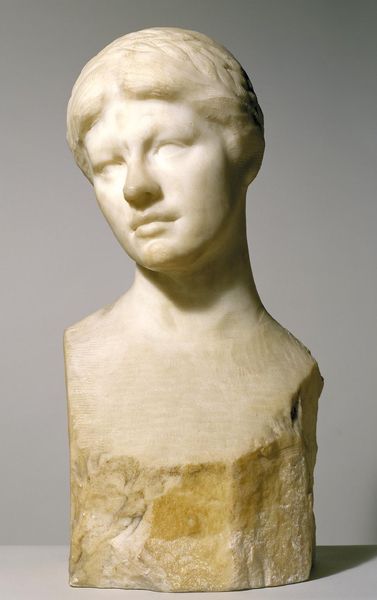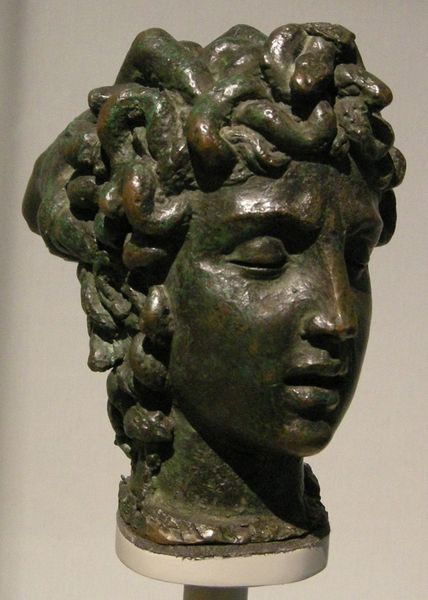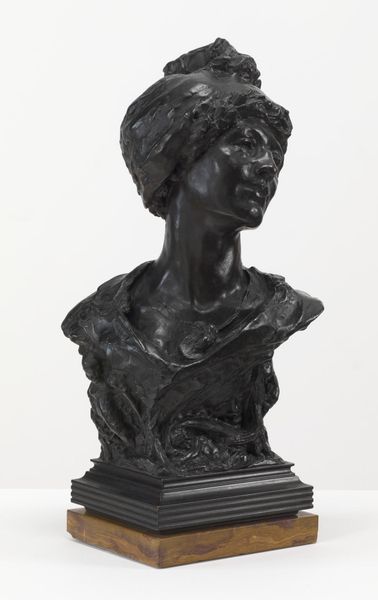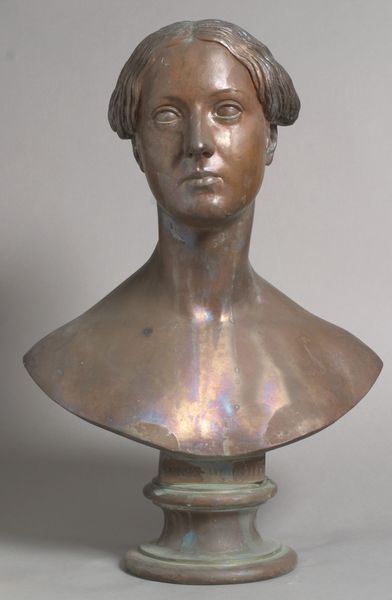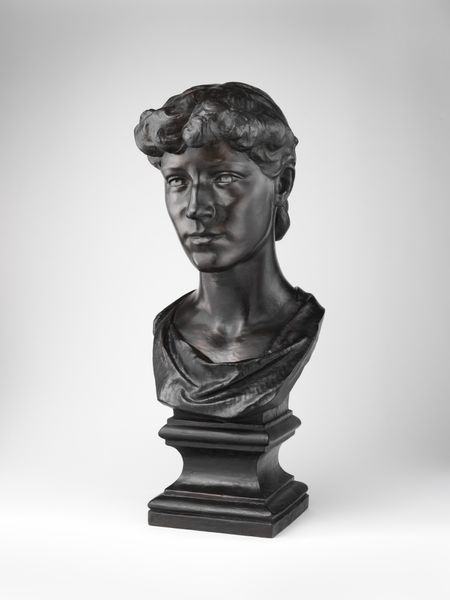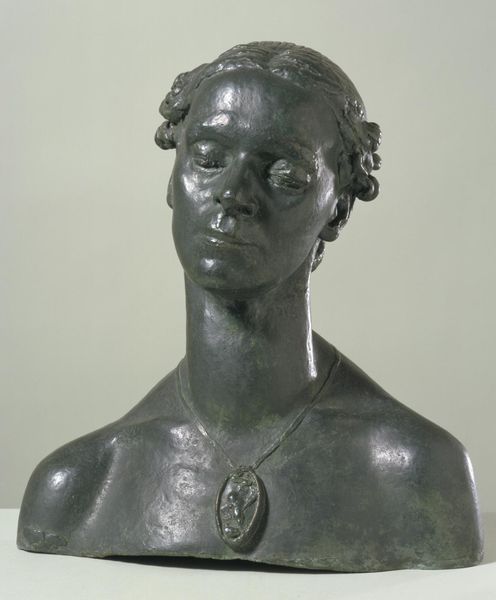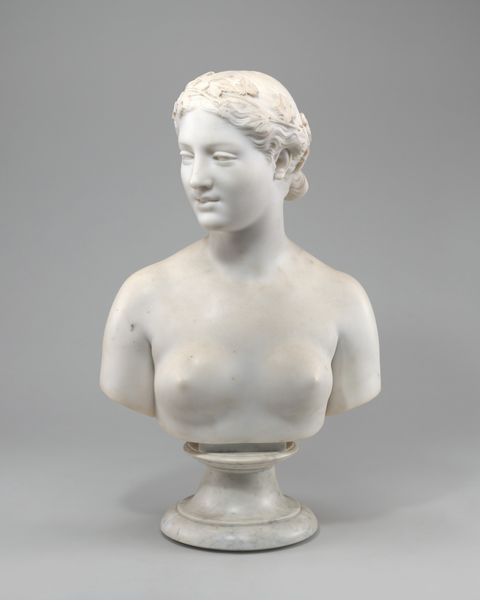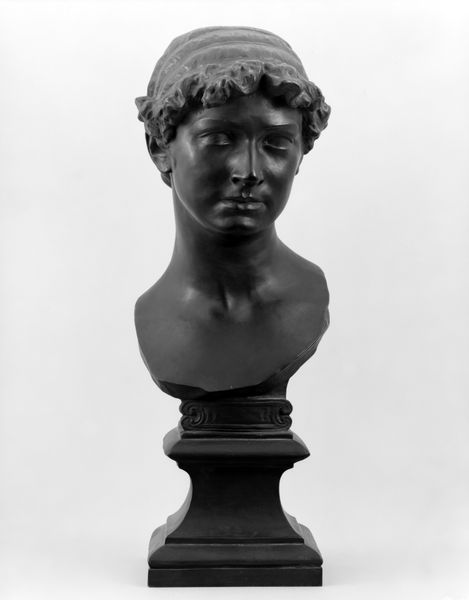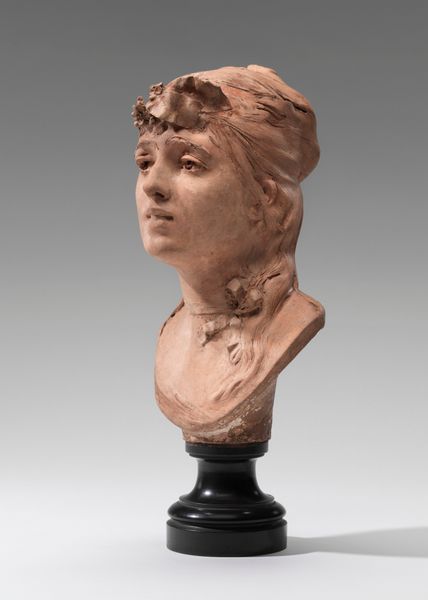
bronze, sculpture
#
portrait
#
art-deco
#
statue
#
3d sculpting
#
negative space
#
head
#
sculpture
#
classical-realism
#
bronze
#
sculptural image
#
figuration
#
male portrait
#
portrait reference
#
unrealistic statue
#
portrait head and shoulder
#
sculpture
#
mid-section and head portrait
#
forehead
#
statue
Copyright: Public domain
Curator: Aristide Maillol sculpted this bronze "Bust of Venus" in 1936. Editor: The first thing I notice is the remarkable smoothness of the bronze. It has a tactile quality, even from a distance. The overall impression is one of serene, classical beauty, yet with a simplified form. Curator: Absolutely. The title, of course, immediately situates the sculpture within a tradition of representing idealized feminine beauty. But Maillol is also engaging with ideas about memory, myth, and archetypes of beauty across different cultures. Venus isn’t just a Roman goddess; she's a cultural symbol. Editor: Yes, and Maillol distills the form to its essence, reducing details to emphasize pure shape and volume. Notice the clean lines of the neck and shoulders. There is a deliberate absence of surface detail; he's less concerned with verisimilitude and more with creating a harmonious structure. The gaze is internal. Curator: Her slightly lowered gaze and the suggestion of a smile evoke a sense of contemplative mystery. I see echoes of pre-classical sculpture here, that understated sense of contained power. Think also about the art deco elements that also appear to be present. Editor: Indeed. And consider the interplay of positive and negative space around the curls framing her face. They are essential to the overall composition, defining the contours and adding a sense of dynamism to an otherwise static form. Curator: I see Venus here as more than an image of perfect beauty. Maillol encourages us to think about the enduring power of symbols to communicate meaning and evoke emotion across generations. She becomes a locus of cultural continuity. Editor: The interplay of shadow and light across the curves accentuates its simple form and evokes a sense of monumentality, something durable and timeless. Maillol allows the essential structure to express beauty itself. Curator: It's interesting how a sculpture so seemingly simple can carry such complex symbolic weight. It causes me to reflect upon the ability of certain forms to resonate across centuries, echoing ancient myths but also embracing modern sensibilities. Editor: And for me, it reinforces how fundamental principles of composition and form can achieve the sublime. The harmony between structure and surface is what truly defines it.
Comments
No comments
Be the first to comment and join the conversation on the ultimate creative platform.

